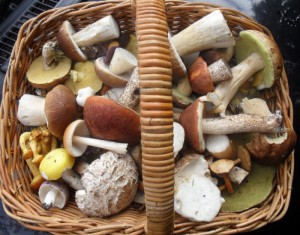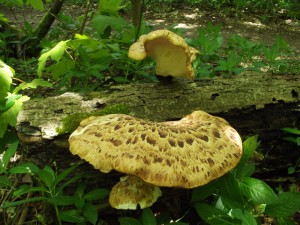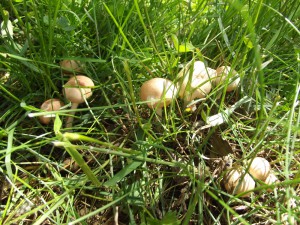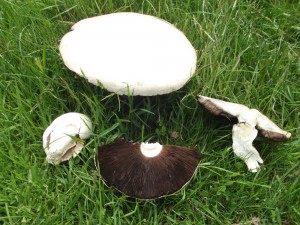09/07/2013
Tickets are now available for two mushroom foraging masterclasses on the closing weekend of the Brighton Autumn Harvest Food Festival (Saturday 14th and Sunday 15th of September).

A typical mid-September collection of (mainly) edible fungi, primarily boletes in this case, but there’s also a parasol, some russulas, amethyst deceivers and millers in there, as well as an inedible (too bitter) species that the collector was hoping (in vain) might be hallucinogenic.
These will be held in the Live Food Show Marquee on Hove Lawns at 11am. The aim is to give a general introduction to foraging for wild mushrooms in the UK, but with a hands-on emphasis on whatever is actually growing in the Sussex countryside at that time. Each year is different, and the middle of September can turn out to be anything between the start of the season, when things are only just getting going, to the point where the biggest variety of species are available of any time in the year. It all depends on the weather. However, some things are pretty much guaranteed, so I’ll be surprised if I’m not able to bring along, for example, some fairy ring mushrooms (Marasmius oreades) and their deadly lookalike fool’s funnel (Clitocybe rivulosa). I would also normally expect to find some chanterelles around this time, and a nice selection of boletes, but who knows what the Mushroom Gods will bring us? One thing for sure is whatever I manage to find in Sussex that weekend, there will be more of it growing for other people to find. This is a typical feature of the way the fungi grow – the same species appears at the same time in multiple locations where the conditions have been similar (and this can include most of England, not just the Home Counties).
Books and the internet are invaluable learning tools, but there is no substitute for actually seeing, touching and smelling a wild mushroom. I will be bringing edible species, poisonous species and very common species. As well as introducing the foraging and identification of wild fungi, I’ll be cooking up some samples for people to try, and the students will also be able to take some of the edible ones home with them.
See festival website for tickets.



